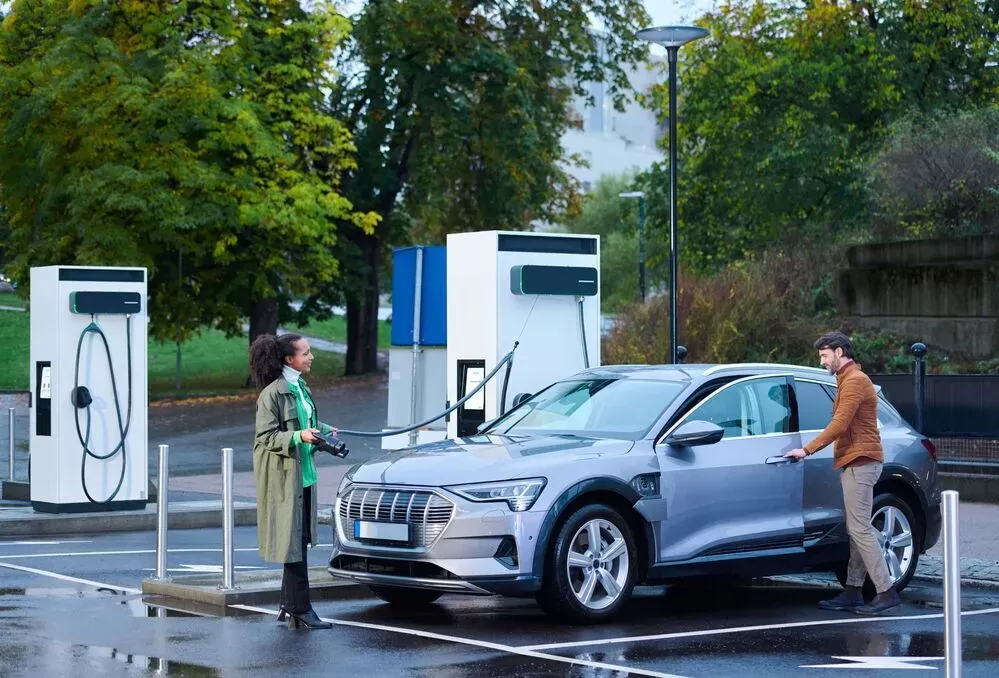Notifications

9 minutes, 44 seconds
-34 Views 0 Comments 0 Likes 0 Reviews

Introduction
As electric vehicles (EVs) become increasingly popular, the demand for convenient and accessible charging solutions is growing rapidly. Among these solutions, workplace EV charging has emerged as a key initiative that blends environmental sustainability with employee satisfaction. But what exactly does workplace EV charging entail, and how can it become a vital part of the modern workplace? Let’s explore its significance, benefits, and how businesses can successfully implement it.As a professional EV charger manufacturer in China, Topper Company delivers dependable electric vehicle charging station equipment and comprehensive charging solutions.
What is Workplace EV Charging?
Workplace EV charging refers to the installation of charging stations at office locations where employees can charge their electric vehicles during work hours. These stations can vary from basic 120V outlets to more advanced Level 2 or DC fast chargers, depending on the needs of the workplace. The initiative extends beyond property owners; many commercial properties are also incorporating EV chargers to attract environmentally conscious tenants and enhance employee offerings.
Offering EV charging at the workplace makes EV ownership more convenient and encourages employees to adopt sustainable technologies. This initiative is a tangible commitment to environmental responsibility and innovation, driving businesses toward more eco-friendly practices.
Globally, workplace charging currently accounts for just 10% of all charging sessions. However, this percentage is expected to grow. A PwC analysis predicts that by 2030, workplace charging will account for 15% of all charging sessions. A UK government study found that nearly half of respondents would be more likely to switch to EVs if workplace charging were available, demonstrating the crucial role it plays in accelerating EV adoption.
Benefits of Workplace EV Charging
Implementing EV charging stations at the workplace provides more than just convenience. It offers multiple benefits for employers, employees, and the environment:
Increased Employee Satisfaction and Retention
Providing workplace EV charging shows employees that their needs are valued, especially those who drive electric vehicles. This alleviates range anxiety and simplifies the charging process, significantly boosting employee morale and satisfaction.
Enhanced Recruitment Outcomes
In today's competitive job market, professionals—particularly those with a focus on sustainability—are increasingly prioritizing employers who align with their values. Offering workplace EV charging positions businesses as forward-thinking and environmentally responsible, attracting top talent and fostering employee loyalty.
Boosted Corporate Reputation
Workplace EV charging highlights an organization’s commitment to environmental and social responsibility. Such sustainable practices can enhance brand perception, attracting customers, stakeholders, and investors who favor businesses with eco-friendly initiatives.
Increased Property Value
Commercial properties equipped with EV charging infrastructure gain a competitive edge in attracting businesses seeking modern, eco-friendly workplaces. This can lead to higher property value and greater appeal to potential tenants.
A Culture of Innovation
Adopting workplace EV charging helps foster a culture of sustainability and innovation within the company. This initiative encourages organizations to explore and implement other environmentally friendly practices, inspiring creative solutions to global environmental challenges.
Improved Corporate Responsibility
By enabling zero-emission commuting, workplace EV charging helps organizations reduce their carbon footprint and meet Environmental, Social, and Governance (ESG) objectives. This direct contribution to sustainability goals makes it a vital aspect of modern corporate strategies.
Types of Workplace Charging
Workplace charging infrastructure can range from simple setups to more advanced systems. Here are the main types of chargers commonly installed:
Level 1 Charging
Level 1 chargers use a standard 120-volt outlet, making them the simplest option. These chargers are suitable for plug-in hybrid electric vehicles (PHEVs) or overnight charging but can take 40 to 50 hours to charge a fully depleted battery electric vehicle (BEV) to 80%.
Level 2 Charging
Level 2 chargers operate on a 240-volt residential or 208-volt commercial outlet and are up to ten times faster than Level 1 chargers. These can fully charge a PHEV in under two hours or a BEV to 80% in four to ten hours, making them ideal for workplaces due to their speed and manageable infrastructure requirements.
Direct Current Fast Charging (DCFC)
DC fast chargers are the most powerful and can provide a significant charge in just 20 minutes to an hour. While they are primarily suitable for BEVs and often incompatible with PHEVs, they are typically installed in high-traffic locations or premium areas due to their high cost and infrastructure demands.
Implementing Workplace EV Charging: Key Considerations
When implementing workplace EV charging, careful planning is essential to maximize its impact. Here are critical factors to consider:
Assessing Employee Needs
Understanding employees’ commuting patterns and vehicle preferences is crucial. Surveys or data collection can help determine the types of chargers required and the number of stations needed.
Evaluating Space and Infrastructure
The layout of parking areas and the electrical capacity of the building will influence the choice of charging systems. Collaborating with EV infrastructure specialists ensures the most efficient use of resources.
Budgeting and Funding
Although workplace EV charging can be a significant investment, government incentives and grants are available to offset the costs. Exploring these opportunities can make implementation more financially feasible.
Scalability
Anticipating future growth in EV adoption is essential. Installing scalable infrastructure that can accommodate more chargers as demand increases will help businesses stay ahead of the curve.
Communication and Engagement
Educating employees about the availability and benefits of workplace EV charging is crucial for encouraging usage. Clear instructions and promotional efforts about the environmental benefits of EV charging can drive employee engagement.
How to Prepare for Workplace EV Charging
Implementing workplace EV charging is a strategic step toward sustainability and employee satisfaction. To ensure a successful rollout, businesses should take the following preparatory steps:
Establish the Business Case for Workplace EV Charging
Identify the benefits for your organization, such as supporting environmental goals, attracting top talent, and improving employee retention. Highlight how the investment aligns with your sustainability objectives and meets the growing demand from EV-driving employees.
Prepare Your Site for Workplace EV Charging
Assess the parking layout to identify suitable charging locations. Consider accessibility, visibility, and proximity to electrical infrastructure. Collaborate with EV charging providers to determine the best charging solutions based on your budget and employee needs.
Evaluate Your Site and Grid Connection
Conduct an analysis of your site’s electrical capacity and grid connection. Work with utility companies to determine if any upgrades are required to support the additional load. Installing smart charging systems can also optimize energy use and minimize costs.
Future-Proof Your Installation
Design the charging infrastructure with scalability in mind. Install conduit and wiring that can accommodate additional chargers as demand increases. Explore solutions like load management systems to maximize efficiency and ensure the infrastructure is ready for emerging technologies.
The Future of Workplace EV Charging
Workplace EV charging is not only a convenience; it’s a strategic investment in sustainability and innovation. As more employees adopt electric vehicles, businesses that prioritize workplace charging will be better positioned to attract top talent, enhance their reputation, and contribute to a greener future.
As the global EV market grows and governments emphasize zero-emission goals, workplace charging is set to become a standard feature in modern workplaces. By planning and investing in this infrastructure today, organizations can lead the charge in building a sustainable tomorrow.Know more about Google SEO Directory
China EV Chargers EV Charger Manufacturer EV Charging Solutions

